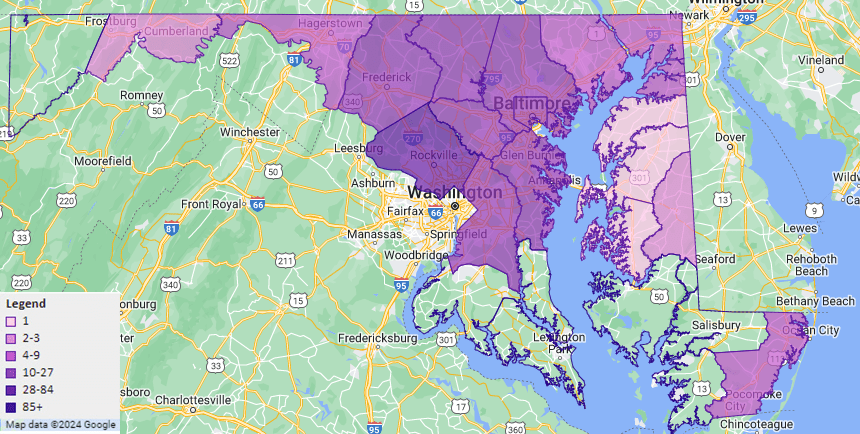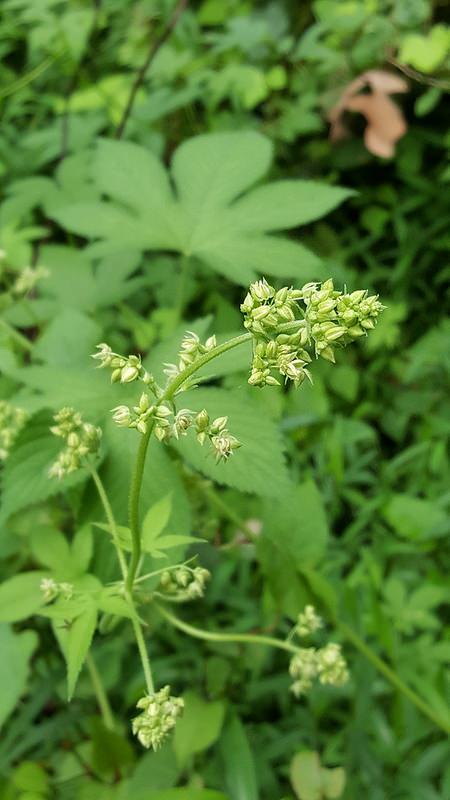From Spring 2024 issue of Branching Out. Subscribe to Branching Out here. Read more Invasives in Your Woodland articles here. This article contains information current as of date of publication.
Before we dive into this issue’s plant species, let’s clear up a usage matter. Grammatically speaking, the name of this plant is the singular form (“hop”) while the name of its flowers and fruit is the plural (“hops”). It’s the same way we describe a rose with blooming roses. Although it may sound odd to refer to it in that way, the singular is correct.
That may be easier to remember than its taxonomic nomenclature. Apparently, scientists began applying a new suffix to the identifier. For more than 150 years, its name was Humulus japonicus; within the last 25 years, some reclassified it as Humulus scandens. Many publications still use the old form.

Regardless, this plant is an invasive along most of the eastern seaboard and in scattered locations as far west as the Dakotas. In Maryland, observers report it in all counties except along the lower Chesapeake Bay (see map at right).
What is it?
Japanese hop is a native of Asia and was imported to North America as an ornamental plant and for Oriental medicinal purposes in the late 1800s. It is an annual vine that can climb or twine around trees, fences, and more, reaching up to 35 feet. It also spreads rapidly across open spaces, with several sources maintaining a single vine can grow more than 30 feet in a single season. Consequently, it can overgrow and shade out native species in the understory, including shrubs and small trees in mats up to four feet thick. While it grows best in full sun and in moist soils, such as disturbed areas and roadsides and forest edges, it does tolerate shade and drier soils, and can become widespread along stream banks and floodplains.
How does it spread?
The plant spreads via seed from the flowering hops, which bloom from early spring into late summer, depending on the location. The seeds are small (1/8 inch in diameter) and can spread via wind, water, animals, or human clothing, shoes, or vehicles. Seeds can stay viable in the soil for up to three years.
How can I identify it?
One of Japanese hop’s distinguishing characteristics is its leaves. They are palmate with 5-7 lobes with toothed edges and 2-6 inches long. The leaves have hooked hairs; the stems have downward-facing prickles. This separates it from the annual and native common hop, which has more rounded leaves and 0-5 lobes. Japanese hop has separate male and female plants, producing flowers with five petals. The female flowers are arranged in short spikes, while the male flowers exist as airy, cone-shaped clusters. See the photo gallery below.
How can I control it?
Small occurrences of Japanese hop can be removed by hand pulling before the root system has a chance to become established. Be sure to remove as much of the plant’s taproot as possible. Repeated attention to the site will be needed due to the seeds’ longevity. Cutting through mowing or weed trimmer is also effective; however, the vine regrows quickly from cut stems, so repeated attention is also required when using this method. Be sure to mow early in the growing season, as seeds begin to mature in early fall and can be spread by the mowing.
Repeated foliar application of herbicides such as glyphosate is also effective. Be sure to use a herbicide labelled for use near water when treating riparian infestations.
For more information:
Asian Vine Climbs into Maryland (Maryland Invasive Species Council)
Humulus scandens (North Carolina Extension)
Japanese Hop Control (Missouri Dept. of Conservation)
Japanese Hop (USDA Forest Service)
